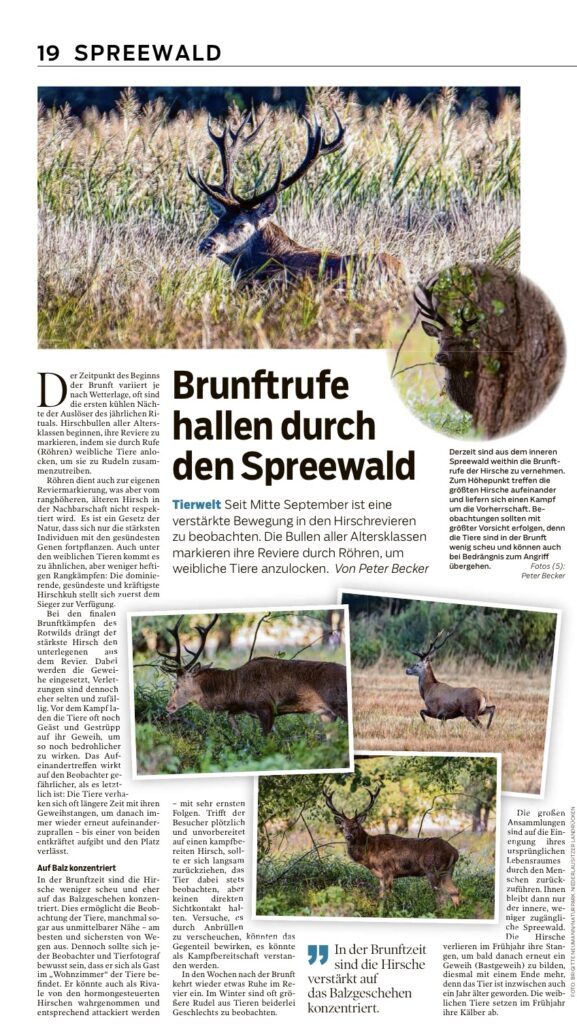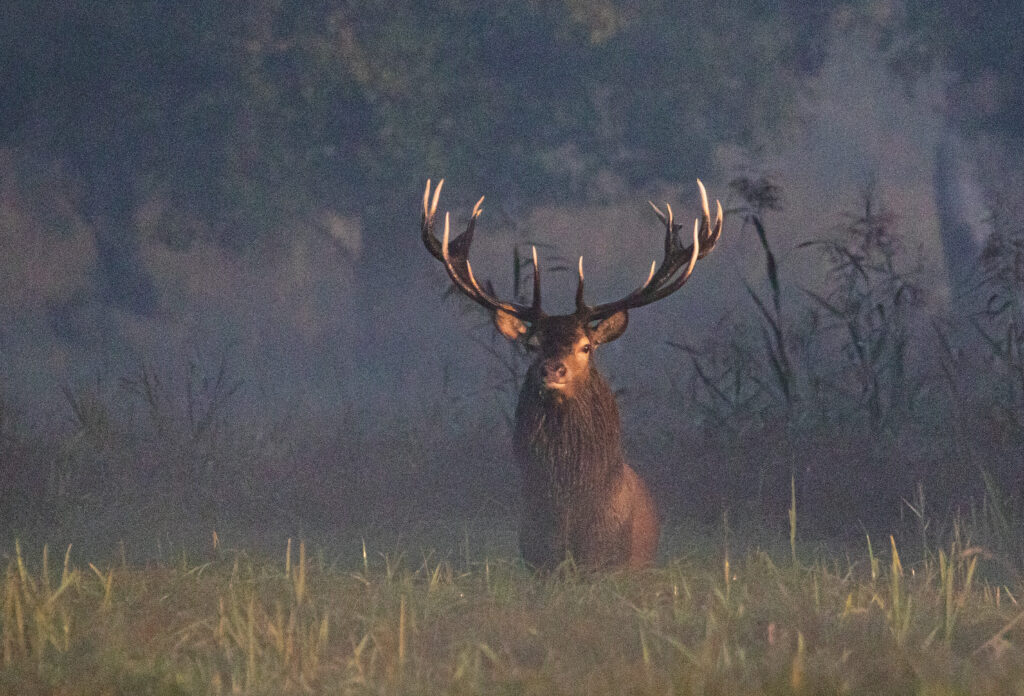Deer rutting in the Spreewald
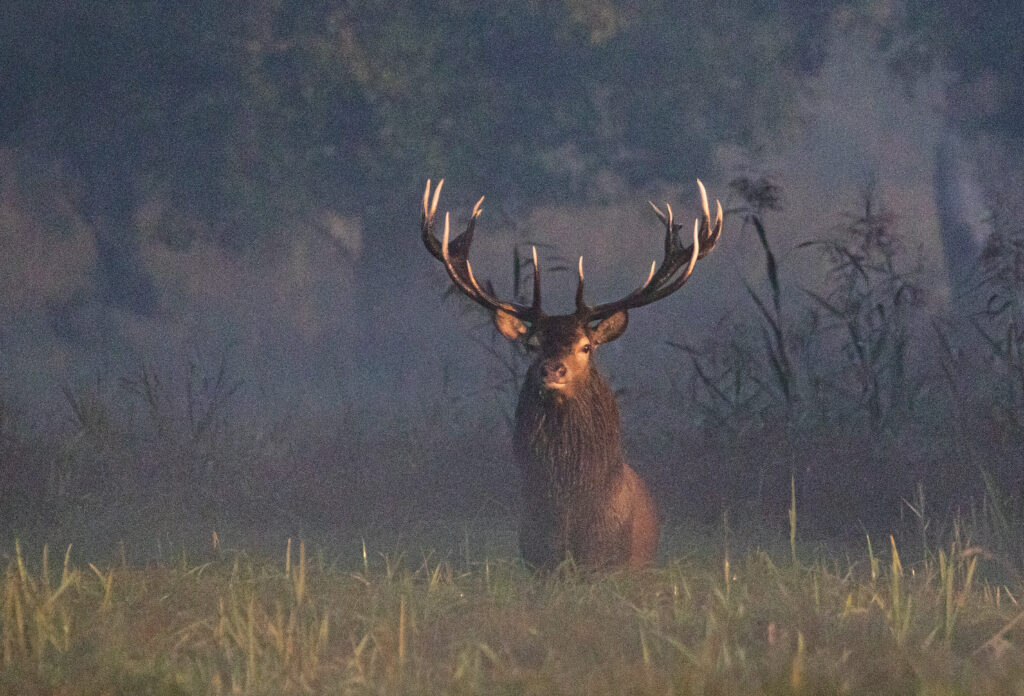
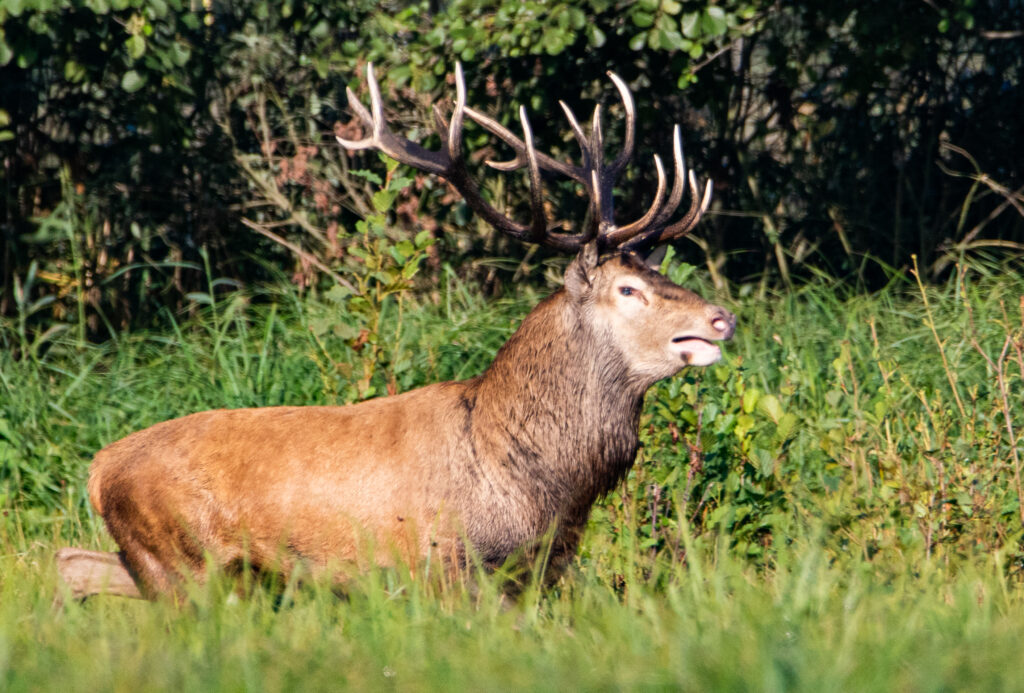
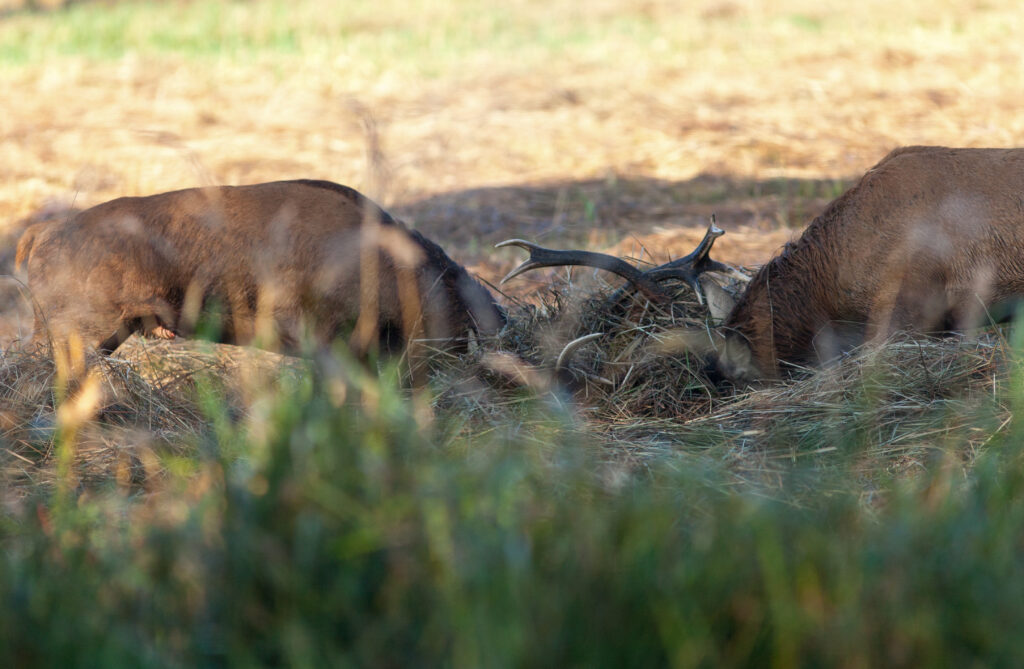
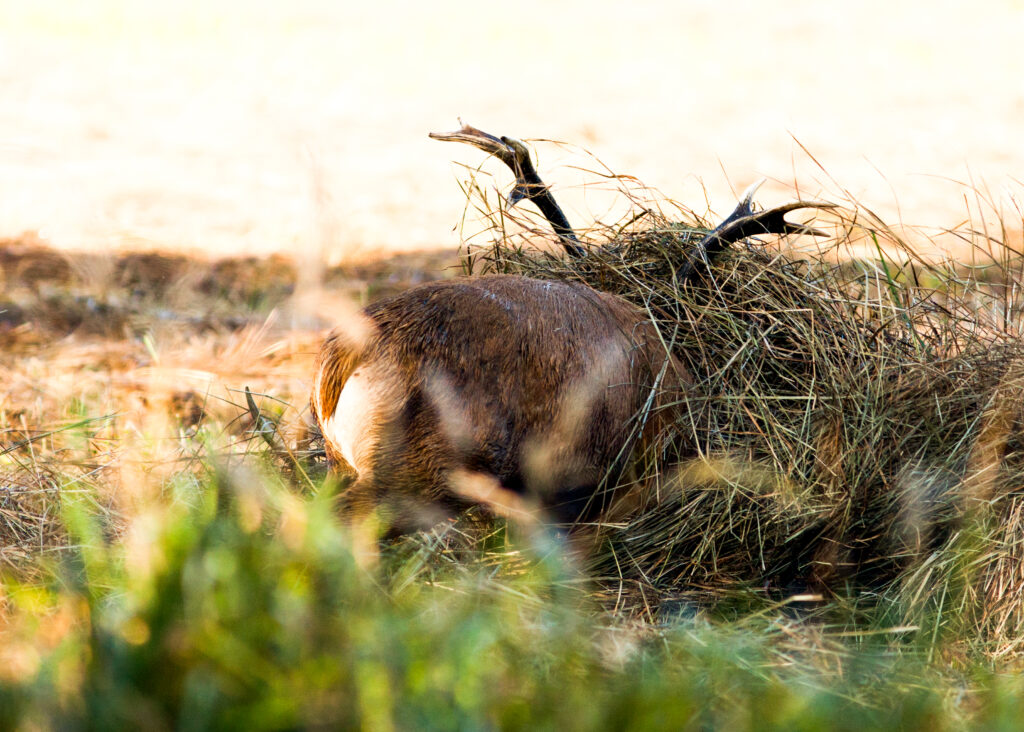
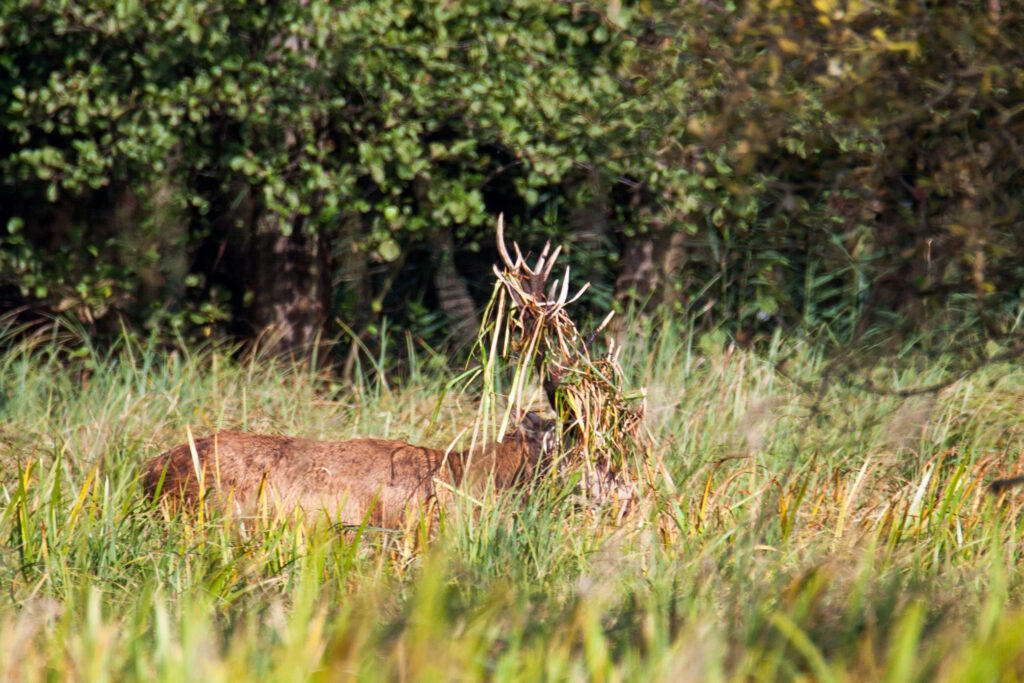
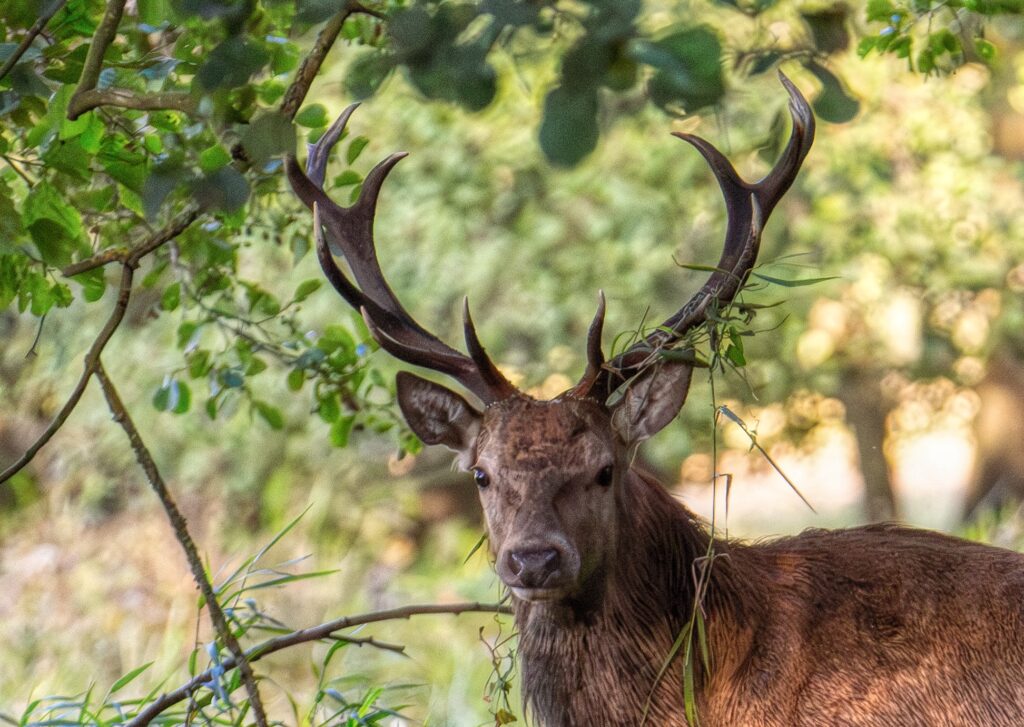
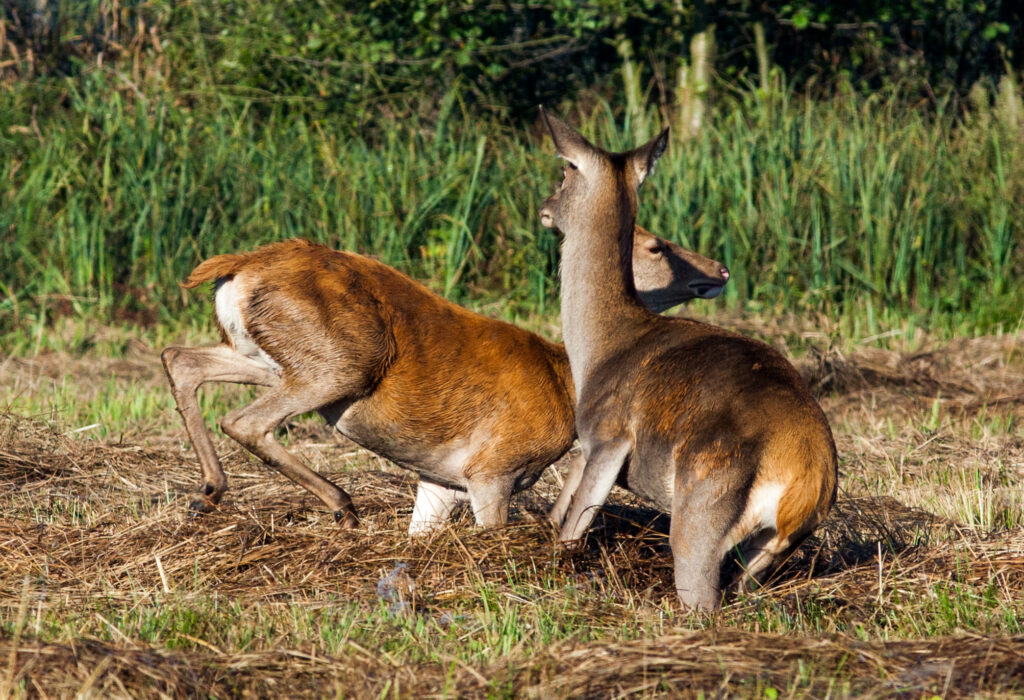
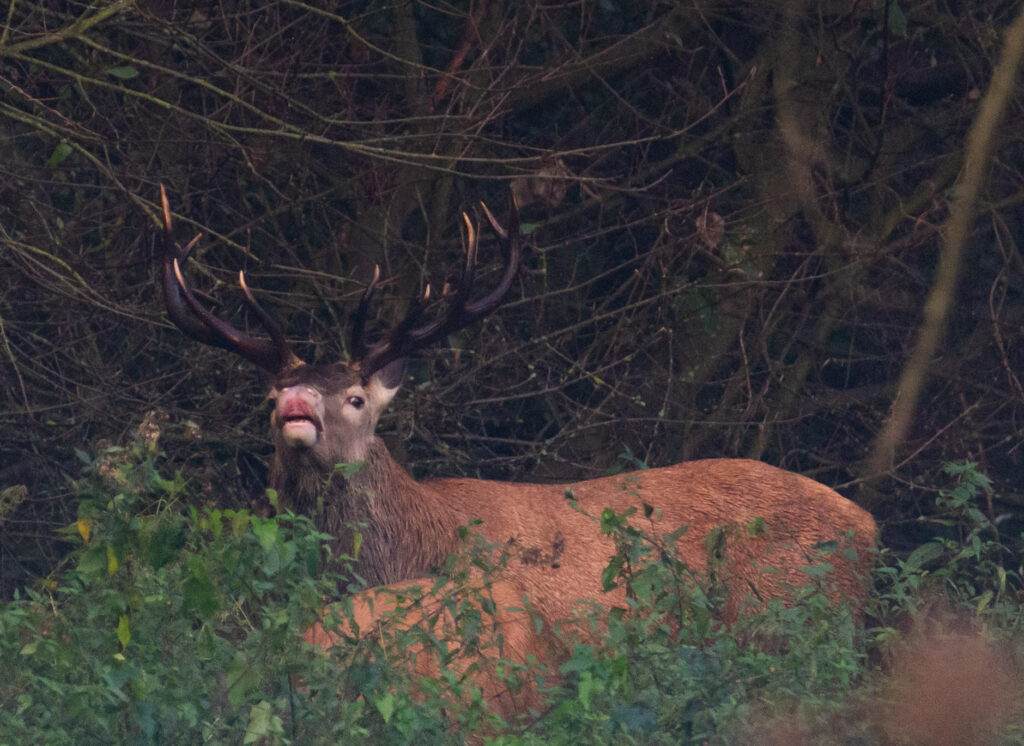
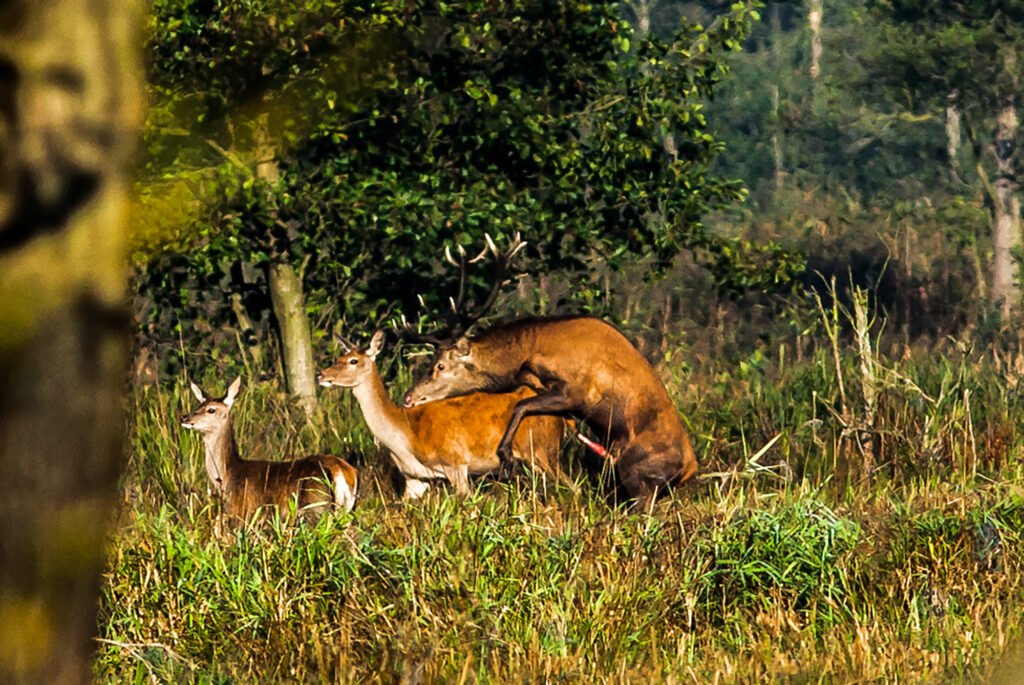
From the end of August, increased movement can be observed in the deer territories in the interior of the Spreewald. The time of the start of the rut varies depending on the weather (occasionally as early as the end of August), the first cool nights are always the trigger for the annual ritual. Deer of all ages begin to mark their territories by attracting females with calls (calls) in order to herd them together. The roaring also serves to mark their own territory, but this is not respected by the higher-ranking, older stag in the neighborhood. It is a law of nature that only the strongest individuals with the healthiest genes reproduce. However, even weaker stags occasionally manage to shoe a female when two strong ones are fighting fiercely.
Similar, but less fierce, rank battles also take place among the females: the dominant, healthiest and strongest doe makes herself available to the winner first.
In the final rutting battles of the red deer, the strongest stag forces the inferior one out of the territory. The antlers are used, but injuries are rare and accidental. Before the fight, the animals often load branches and undergrowth onto their antlers to make them look even more threatening. The encounter appears more dangerous to the observer than it actually is: the animals often tangle with their antlers for a long time, only to clash again and again – until one of them gives up exhausted and leaves the area.
During the rutting season, the stags are less shy and more focused on the rutting process. This makes it possible to observe the animals, sometimes even at close range and preferably and most safely from paths. Nevertheless, every observer (and animal photographer) should be aware that they are guests in the animals’ “living room”. It could also be perceived as a rival by the hormone-driven deer and attacked accordingly – with very serious consequences. If the visitor suddenly and unprepared encounters a stag ready to fight, he should retreat slowly, always observing the animal, but not keeping direct visual contact. Attempts to scare it away by shouting at it could have the opposite effect, it could be interpreted as a willingness to fight. If an attack occurs, seek shelter behind a tree.
In the weeks following the rut, the hunting grounds become somewhat quieter again. In winter, larger packs of animals of both sexes can often be observed. The large populations are due to the restriction of their original habitat by humans. You will then only have the inner, less accessible Spreewald. This is also due to the increased hunting pressure in the less wet forests and the heavy hunting in the inner Spreewald. Responsible hunters refrain from killing the animal if it is too difficult to retrieve or even search for it.
The stags lose their antlers in late winter, only to form new antlers (velvet antlers) soon afterwards, this time with one more end, as the stag has also grown a year older in the meantime. However, the number of ends also depends on the living conditions. In the Spreewald, 18-pointer and even older deer are rarely seen. The females give birth to their calves at the end of May/June.
The hunters take red deer in accordance with the officially approved shooting plan. This often contains the minimum shooting criterion for younger animals, which is why there is often too much intervention in the juvenile class and fewer individuals can grow old. Furthermore, hunting has become more effective with today’s technology (silencers; night optics). As a result, populations are declining, which is desirable from a forestry point of view.
From 01.08. – 31.12., in some places until 31.01., is hunting season, i.e. also during the rut.
Peter Becker, 21.09.25
I would like to thank Arnulf Weigand and Sebastian Fuchs for their professional support!
The Lausitzer Rundschau reported on 27.09.25:
